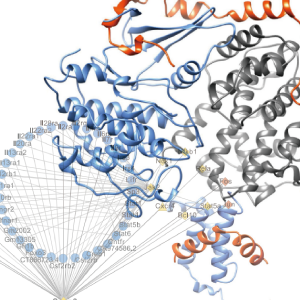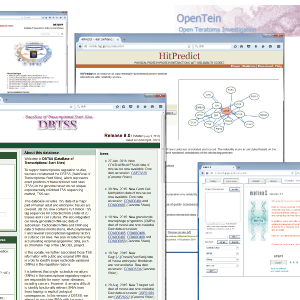NAKAI Lab.
Laboratory of Functional Analysis in silico
Human Genome Center
The Institute of Medical Science
The University of Tokyo
Mission Statement

「イン・シリコ(in silico)」とは、in vivo(生体内)、in vitro(試験管内)などの生物学用語のアナロジーから生まれた用語で、シリコン内、すなわちコンピュータを使った研究という意味です。
本研究室は、ヒトゲノム解析センターに所属しており、ゲノム情報のイン・シリコ解析に焦点を合わせています。そして、実験研究者と連携して次世代シークエンサーなどの先端実験技術を駆使し、高度なバイオインフォマティクス技術の研究開発と、それらを応用することで、生物学的な新しい発見、疾患や免疫応答メカニズムの理解、再生医療への貢献を目指しています。
Research Interests

Genome Informatics
gene regulation modeling
epigenetics research
NGS data analysis
The understanding of the mechanisms of transcriptional regulation remains a great challenge for molecular biologists in the post-genome era. At the transcriptional level, DNA-binding proteins (transcription factors) modulate the expression of genes by binding to their specific DNA regulatory elements in nearby genomic regions. Nowadays, the identification and characterization of these components are valuable because the presence or absence of …

Computational Proteomics
protein function prediction
intrinsic disorder protein
PPI network analysis
Proteins play an important role in the functioning of the cell. We use computational methods to study the properties of proteins from two perspectives – their structure and their interactions. According to the structure-function paradigm, the functions of proteins are a direct result of their structure, which is fixed. However, there are several examples of proteins that function without a stable three-dimensional structure – known as intrinsically disordered proteins …

Bioinformatics Resource Development
open-source software
web-based tools
database
The importance of an "open innovation" environment that allows research institutes to continuously create innovative technologies has become more permeable. We are developing computational platforms that help data-driven science. Our efforts making databases and source codes publicly accessible offer many opportunities to the communities. …
Public Relations
-
2025.03.13: Yitao Yang (D2) has been awarded the Most Outstanding Student Publication Award by IMSUT
-
2025.03.13: Weihang Zhang (D3) has been awarded Outstanding Student Publication Award by IMSUT
2025.02.27: [EurekAlert] Deep-learning framework advances tissue analysis in spatial transcriptomics
2024.05.01: Yang CUI (D3) has been granted SPRING GX fellowship
2024.04.01: Yuna MIYACH (D1) has been granted SPRING GX fellowship
2023.10.01: Wanzhe XU (D1) has been granted SPRING GX fellowship
2023.09.09: Sung-Joon PARK received the Outstanding Oral Presentation Award from IIBMP2023
2023.04.01: Yutong DAI (D1) has been granted SPRING GX fellowship
2022.04.01: Weihang ZHANG (D1) has been granted SPRING GX fellowship
2021.09.01: Xin ZENG (D1) has been granted SPRING GX fellowship
2021.09.29: Taisuke HORI received the Most Outstanding Oral Presentation Award from IIBMP2021
-
2021.01.16: Hao JIA awarded Best Paper Presentation in InCoB 2020
-
【News Letter】医学・医療への貢献から、健康行動の促進まで 医療情報の利活用で、新しい価値創造を
(LINK-J 2020.11.04) -
2020.09.03: Prof. Nakai received Japan Society Bioinformatics Award
-
2020.09.03: Assoc. Prof. Park awarded Excellent Oral Presentation in IIBMP 2020
-
Lab. introduction poster (研究室紹介ポスター) [PDF]
-
Press release:
ホヤが細菌から獲得した遺伝子で身を守れるようになったわけ~遺伝子の水平伝搬による生物進化に関する新説の提唱 (2016.12)







